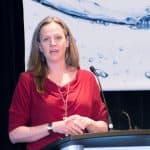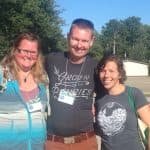Survey results record nearly 26,000 birds!
 Columbia Wetlands Waterbird Survey
Columbia Wetlands Waterbird Survey
Submitted by CBEEN Member Rachel Darvill, Golden
Did you know that the Columbia Wetlands are one of the longest continuous wetlands in North America and the only natural stretch of the Columbia River that remains? Have you ever wondered how many birds use the wetlands or what species of birds are found within this wild ecosystem? Many thousands of birds come to use the Columbia Wetlands every spring and fall. During the spring migration, some birds come to rest and feed for a short while before continuing northward, but a large number of birds stay in the wetlands to breed and raise their young before returning south for winter.
During this past April the Columbia Wetlands Waterbird Survey (CWWS), a coordinated bird count, had 77 volunteers that went to 86 sites over three survey dates. The CWWS recorded over 25 800 individual birds in total this spring, with the highest species count owing to Mallards with 1963 individuals on April 3 rd. The second highest count was 1949 individual American Wigeons recorded on April 10th. There were 242 bird checklists submitted with 111 different species recorded. Additionally, an earlier survey was also done to capture peak swan migration and was conducted with the use of a fixed-wing aircraft, which flew over the entire length of the Columbia Wetlands. Through this aerial survey, 756 individual swans (Trumpeter and Tundra Swan) were counted.
“The Columbia Wetlands Waterbird Survey (CWWS) is helping us to learn more about how many waterbirds use the wetlands during the migration periods and it is also helping us to identify where some of the more important migration stopover habitat occurs within the Columbia Wetlands complex”, states Rachel Darvill, CWWS Program Biologist. “The baseline data that we are collecting will help inform management decisions, such as priorities for habitat enhancement, restoration, or education programs that can help protect bird habitat and help reverse declining bird population trends.”
Ordinary people of all ages are becoming citizen scientists through the CWWS. The project offers and provides training sessions to volunteers, guidance on surveys, as well as high optical equipment and field guides to participants in need of this gear. Some volunteers have a lot of bird watching experience, whereas others are just beginning. The CWWS is aiming to further connect local citizens to birds and the wetlands.
“I’m really impressed with the number of individual birds counted this spring through the waterbird survey, but I’m especially thrilled with the number of dedicated volunteers that make this survey possible,” states Darvill. The CWWS was initiated just last spring when nearly 40 volunteers counted and identified about 14,000 birds at 64 accessible sites in the wetlands. Just one year later the project has garnered the dedication of 77 participants that are surveying more sites, and thus more birds are able to be counted and identified.
“In order to gather important and valuable baseline data through the CWWS, we need a lot of help from volunteer citizen-scientists since many locations throughout the wetlands need to be surveyed,” says Darvill. “With the wetlands being about 15,000 hectares in size, that’s a huge area to cover! It is challenging to survey this large ecosystem due to its vast inaccessibility, but there are a number of access locations we have found to utilize in order to survey waterbirds.”
One of the major goals of the CWWS is that data collected can be used for a possible Important Bird Area (IBA) designation, which if achieved, would recognize the wetlands as being irreplaceable in terms of their habitat value for birds. “There is a significant lack of current data available to show how many waterbirds use the wetlands during migration periods, and in order to receive an IBA designation, the Columbia Wetlands needs to trigger specific populations numbers for various bird species,” states Darvill.
The CWWS is also working to educate and connect community members to the ecological values of birds and wetlands through presentations, events, and school fieldtrips. This past April, thanks to ‘Wild Voices for Kids’, the CWWS took 77 elementary students outside for bird watching field trips in the Canal Flats and Windermere/Invermere. Additionally, 110 more elementary students were taken outside to learn about birds and the wetlands in the Golden area through Wildsight Golden.
Do you want to collect baseline data on waterbirds? The 2016 fall survey dates will be Thursday September 29th, Wednesday October 5th, and Saturday October 15th from 10am to 1pm on each date. Participating in the CWWS is a wonderful way to learn about birds and the biodiverse Columbia Wetlands. Come and join in on this fun and valuable initiative!
For more information or to sign up for the surveys, please contact Rachel Darvill at rachel@wildsight.ca or Verena Shaw at verena@wildsight.ca, or call 250-344-5530. The CWWS is funded by the Columbia Basin Trust, Wildlife Habitat Canada, Columbia Shuswap Regional District Area A, and Regional District East Kootenay Area G.




